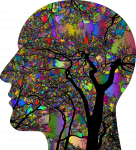
Book Review for “The Power of Full Engagement”
Having recently received my Mental First Aider certificate, I have been reviewing some past mental health and leadership resources. This message is timeless, and relevant even 20 years after it was first written.
Jim Loehr and Tony Schwartz offer The Power of Full Engagement to demonstrate that managing energy, not time, is the key to becoming physically energized, emotionally connected, mentally focused, and spiritually aligned on and off the job.
The authors present a holistic approach to development, renewal, and leadership that provides powerful insights and incentives to individuals in every walk of life.
While some of the book does pertain to our roles as leaders in organizations, it definetly sketches a profile of how their principles apply to the whole person.
“Leaders are the stewards of organizational energy—in companies, organizations and even in families. They inspire or demoralize others first by how effectively they manage their own energy and next by how well they mobilize, focus, invest and renew the collective energy of those they lead. The skillful management of energy, individually and organizationally, makes possible something that we call ‘full engagement.”
Consider the opening paragraphs of this book.
“We live in digital time. Our rhythms are rushed, rapid fire and relentless, our days carved up into bits and bytes. We celebrate breadth rather than depth, quick reaction more than considered reflection. We skim across the surface, alighting for brief moments at dozens of destinations but rarely remaining for long at any one. We race through our lives without pausing to consider who we really want to be or where we really want to go. We’re wired up but we’re melting down.”
“Most of us are just trying to do the best that we can. When demand exceeds our capacity, we begin to make expedient choices that get us through our days and nights, but take a toll over time. We survive on too little sleep, wolf down fast foods on the run, fuel up with coffee and cool down with alcohol and sleeping pills. Faced with relentless demands at work, we become short-tempered and easily distracted. We return home from long days at work feeling exhausted and often experience our families not as a source of joy and renewal, but as one more demand in an already overburdened life.”
Principle 1: Full engagement requires drawing on four separate but related sources of energy: physical, emotional, mental and spiritual.
Principle 2: Because energy diminishes both with overuse and with underuse, we must balance energy expenditure with intermittent energy renewal.
Principle 3: To build capacity we must push beyond our normal limits, training in the same systematic way that elite athletes do.
Principle 4: Positive energy rituals-highly specific routines for managing energy-are the key to full engagement and sustained high performance.Making change that lasts requires a 3-step process:
- Define Purpose
- Face the Truth
- Take Action.
The authors describe the connectivity of the 4 sources of energy (physical, emotional, mental and spiritual) in
“The Mind and Body Are One”.
Two key words are used, flexibility and resilience.
Notice:
Physical strength, endurance, flexibility and resilience we readily grasp at the physical level, however these markers also are applicable to our mental, emotional, and spiritual capacity.
“Emotional flexibility reflects the capacity to move freely and appropriately along a wide spectrum of emotions rather than responding rigidly or defensively. Emotional resilience is the ability to bounce back from experiences of disappointment, frustration and even loss.
Mental endurance is a measure of the ability to sustain focus and concentration over time, while mental flexibility is marked by the capacity to move between the rational and the intuitive and to embrace multiple points of view.
Spiritual strength is reflected in the commitment to one’s deepest values, regardless of circumstance and even when adhering to them involves personal sacrifice. Spiritual flexibility, by contrast, reflects the tolerance for values and beliefs that are different than one’s own, so long as those values and beliefs don’t bring harm to others.
In short, to be fully engaged requires strength, endurance, flexibility and resilience in all dimensions.”
I say “if” because, like any new regime, this approach will run into a set of corporate obstacles, principally the resistance of top management in finding and implementing these ideas. Some of what the authors advises, wise though it may be, will run right into the face of traditions in the workplace many are unwilling to change.
The authors plainly apply one of Aristotle his leading principles (in medio stat veritute, “virtue lies in the middle”), however, they show that balance is not static–a middle, dead zone–but is found by balancing one extreme (stress) against the other (recovery). That’s the key to full engagement.
Stress and recovery have to be done in balance (as with physical exercise) and it is necessary to plunge fully into both to get out of the dead zone in the middle. Most performance in today’s organizations is in this middle ground between rest and stress; but the high achievers stretch their capacity enough to let it bounce back stronger the next time after a reprieve.
Most workers and managers don’t do either: they live and work in a zone of half-tired, half-dozing caused by our culture’s ignorance of–and hostility toward–managing energy naturally and effectively.
The back end of the book is devoted to “The Training System” which are chapters that guide the reader to take action and get results. Attitude, rituals, daily tasks, diet, vision, and purpose are analyzed and described. And a summary of the Corporate Athlete caps it off, including some useful charts.
For the American who lives in digital time, whose pace is rushed, rapid-fire, and relentless, facing crushing workloads, and who tries to cram as much as possible into every day so that who is wired up, but melting down, I recommend the reading of this book for the secret of full engagement and a healthful, happy and balanced life.
Review originally written by Gerard Howell edited by Anita Ryan
